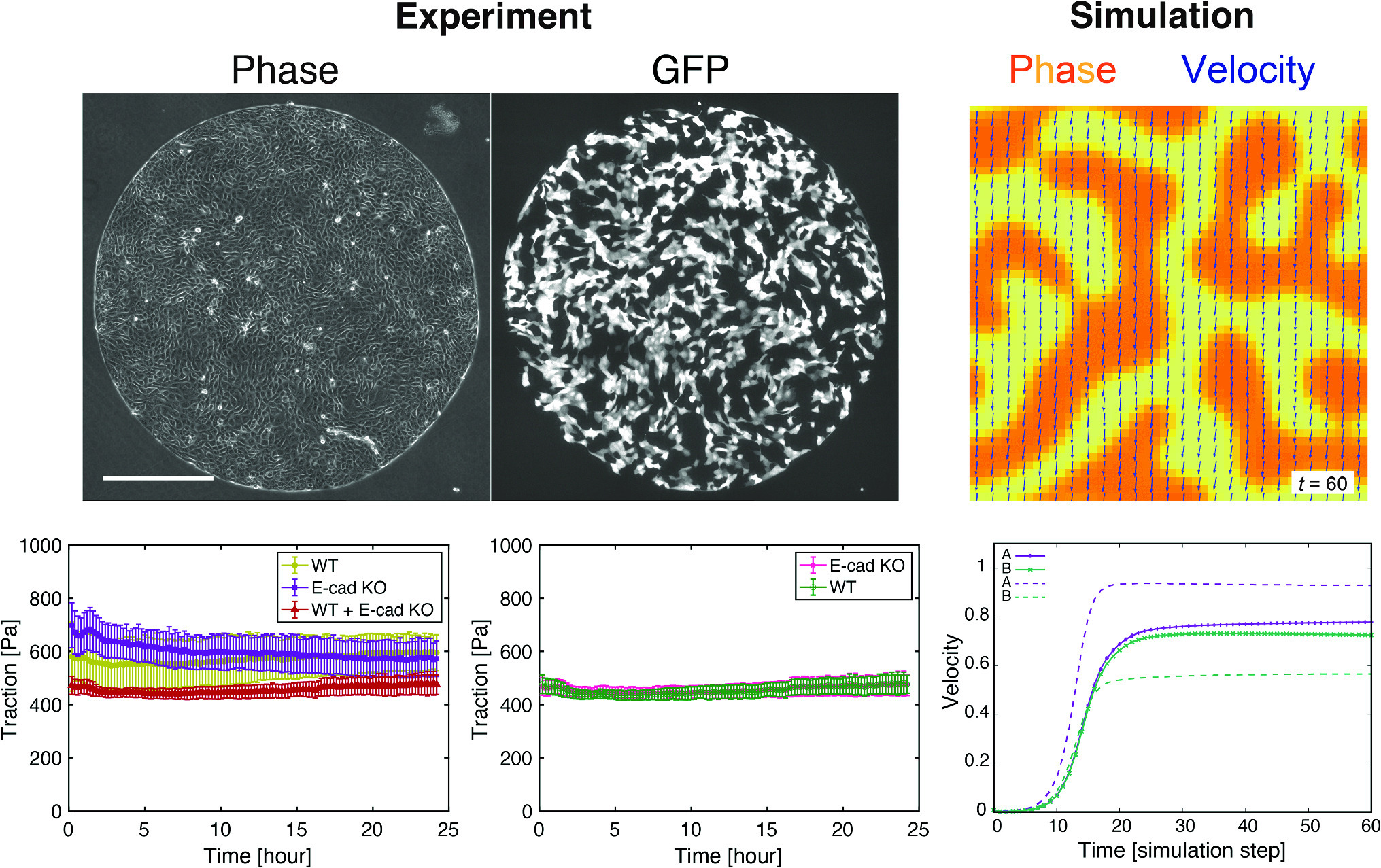https://doi.org/10.1140/epje/s10189-024-00415-w
Regular Article - Living Systems
Mechanical convergence in mixed populations of mammalian epithelial cells
1
Department of Biological Sciences, Graduate School of Science, The University of Tokyo, 113-0032, Tokyo, Japan
2
Department of Molecular Oncology, Graduate School of Medicine, Kyoto University, 606-8501, Kyoto, Japan
3
Universal Biology Institute, The University of Tokyo, 113-0033, Tokyo, Japan
4
Graduate School of Arts and Sciences, The University of Tokyo, 153-0041, Tokyo, Japan
5
Division of Biological Science, Graduate School of Science, Nagoya University, 464-8602, Aichi, Japan
6
Department of Computational Biology and Medical Sciences, Graduate School of Frontier Sciences, The University of Tokyo, 277-8561, Chiba, Japan
f
csishihara@g.ecc.u-tokyo.ac.jp
g
sugimura@bs.s.u-tokyo.ac.jp
Received:
20
December
2023
Accepted:
5
March
2024
Published online:
27
March
2024
Tissues consist of cells with different molecular and/or mechanical properties. Measuring the forces and stresses in mixed-cell populations is essential for understanding the mechanisms by which tissue development, homeostasis, and disease emerge from the cooperation of distinct cell types. However, many previous studies have primarily focused their mechanical measurements on dissociated cells or aggregates of a single-cell type, leaving the mechanics of mixed-cell populations largely unexplored. In the present study, we aimed to elucidate the influence of interactions between different cell types on cell mechanics by conducting in situ mechanical measurements on a monolayer of mammalian epithelial cells. Our findings revealed that while individual cell types displayed varying magnitudes of traction and intercellular stress before mixing, these mechanical values shifted in the mixed monolayer, becoming nearly indistinguishable between the cell types. Moreover, by analyzing a mixed-phase model of active tissues, we identified physical conditions under which such mechanical convergence is induced. Overall, the present study underscores the importance of in situ mechanical measurements in mixed-cell populations to deepen our understanding of the mechanics of multicellular systems.
Supplementary Information The online version contains supplementary material available at https://doi.org/10.1140/epje/s10189-024-00415-w.
© The Author(s) 2024
 Open Access This article is licensed under a Creative Commons Attribution 4.0 International License, which permits use, sharing, adaptation, distribution and reproduction in any medium or format, as long as you give appropriate credit to the original author(s) and the source, provide a link to the Creative Commons licence, and indicate if changes were made. The images or other third party material in this article are included in the article’s Creative Commons licence, unless indicated otherwise in a credit line to the material. If material is not included in the article’s Creative Commons licence and your intended use is not permitted by statutory regulation or exceeds the permitted use, you will need to obtain permission directly from the copyright holder. To view a copy of this licence, visit http://creativecommons.org/licenses/by/4.0/.
Open Access This article is licensed under a Creative Commons Attribution 4.0 International License, which permits use, sharing, adaptation, distribution and reproduction in any medium or format, as long as you give appropriate credit to the original author(s) and the source, provide a link to the Creative Commons licence, and indicate if changes were made. The images or other third party material in this article are included in the article’s Creative Commons licence, unless indicated otherwise in a credit line to the material. If material is not included in the article’s Creative Commons licence and your intended use is not permitted by statutory regulation or exceeds the permitted use, you will need to obtain permission directly from the copyright holder. To view a copy of this licence, visit http://creativecommons.org/licenses/by/4.0/.





